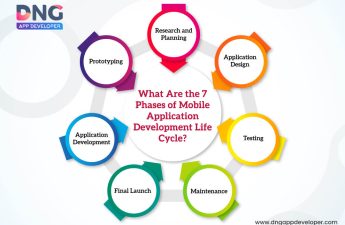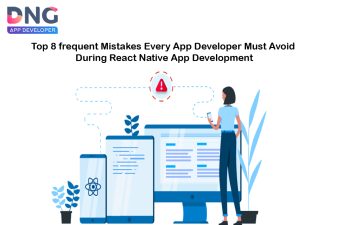Application Development Methodologies – Do you want to improve the structure of your software development workflow? The best software development technique for your product organisation is determined largely by the size of your team, your goals, and other criteria. Here is an overview of the most widely used and acknowledged software development techniques to assist you in determining which is best for your team.
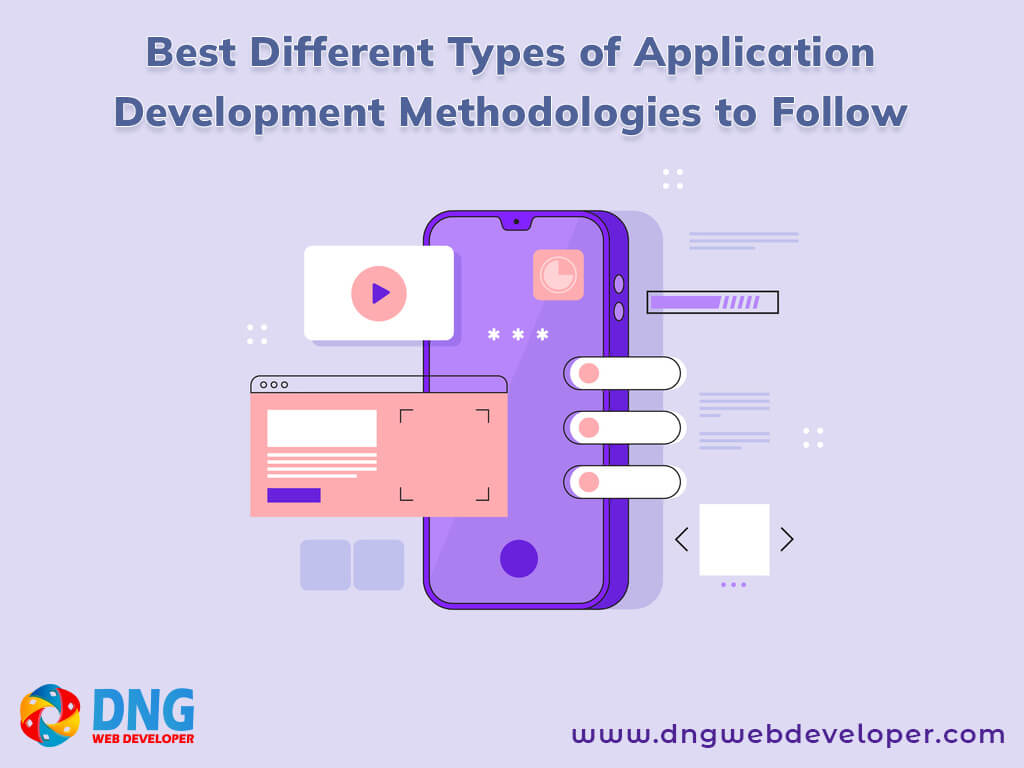
Different 6 Types of Application Development Methodologies
1. Waterfall
Waterfall is the most classic and sequential method of software development. Although it is commonly seen as a “old school” or outmoded method, understanding the history and structure of Waterfall will help you appreciate the flexibility of more recent methodologies. Waterfall, which was developed in 1970, was one of the most renowned techniques for several decades due to its plan-driven approach.
Waterfall necessitates a great deal of organisation and documentation up front. It’s broken down into self-contained phases or steps. The first stage is crucial because it requires both developers and clients to have a clear understanding of the project’s needs and scope before proceeding. The steps are rather rigorous and frequently follow the following sequence: define the project’s requirements and scope, evaluate those needs, design, develop, test, deploy, and ultimately, maintain.
With this method, there is a lack of flexibility, which means that what is determined by the customer and developer at the outset must be followed through. If any adjustments or corrections are required near the conclusion of the process, the Waterfall technique often necessitates a complete restart.
Typically, one stage must be completed before the next can begin, which can aid in organisation and assignment completion. Furthermore, because the complete scope of the project is known in advance, software progress can be easily measured. Waterfall is frequently used by big, plan-driven teams with a very clear understanding of the project’s scope; nevertheless, application development methodologies teams that do not operate in a vacuum will likely achieve greater outcomes with the flexibility and agility of more recent approaches.
2. Feature-Driven Development
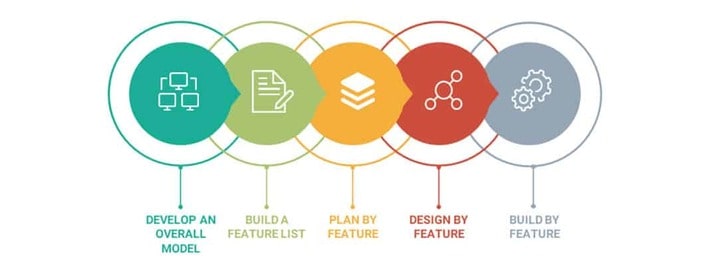
Feature-Driven Development (FDD) is an iterative and incremental approach to software development that is derived from the Agile application development methodologies and is regarded one way to execute it. FDD, like Waterfall, is commonly seen as an older technique, a type of forerunner to modern Lean/Agile implementations. FDD remains focused on the aim of producing working software on a regular basis and is particularly client-centric, making it a suitable fit for smaller application development methodologies teams.
Features are a fundamental component of FDD. Features are client-valued bits of work that should be provided every two weeks, according to the FDD strategy.
FDD comprises five phases to build tangible software frequently and efficiently, the first of which is to develop an overarching model. Create a feature list and then plan by feature. The final two steps—design by feature and build by feature—will require the most effort. Status reporting is encouraged at each stage and aids in tracking work, results, and any errors. Although FDD’s responsiveness to change is one of its strengths, understanding the client’s needs and the general model at the start of the project can help to avoid surprises during development.
Furthermore, each feature that takes more than two weeks to develop and create must be further subdivided into individual features until it fulfils the two-week criteria. FDD’s inflexible structure makes it less appealing to teams that balance project-driven and break-fix work.
3. Agile
The Agile technique was created in reaction to rising dissatisfaction with Waterfall and other rigid, inflexible application development methodologies. This method is intended to accommodate change and the requirement to generate software more quickly.
Agile prioritises people and their connections and interactions over tools; it emphasises customer collaboration throughout the ecommerce application development methodologies process; it adjusts to change rather than following a set plan; and it focuses on presenting working software rather than paperwork.
Unlike Waterfall, Agile is best suited to dealing with the complexity and variety of application development methodologies projects. Using the Agile methodology, teams create in short sprints or iterations, each of which has a set time and a list of deliverables, but not necessarily in any specific order. During sprints, teams strive to provide functional software (or some other tangible, testable output).
Agile emphasises team strengths and efficiency, as well as internal feedback from multiple departments and clients. Client satisfaction is the primary priority with the Agile strategy, which teams achieve by providing working, tested, prioritised features on a continual basis.
4. Scrum
Scrum is a method of implementing the Agile approach that takes from Agile’s basic principles and concept that teams and developers should collaborate heavily and on a daily basis.
Scrum is an iterative approach to web development that puts the team first—experienced and disciplined workers on smaller teams may find the most success with this method, as it requires self-organization and self-management.
At the start, team members break down end goals into smaller goals and work through them using fixed-length iterations—or sprints—to build software and demonstrate it frequently (which usually last two weeks). Meetings are vital in the Scrum approach, and daily planning meetings and demos take place during each sprint to track progress and get feedback. This incremental strategy encourages rapid change and progress while adding value to difficult projects. Scrum combines the structure and discipline of older software development approaches with the flexibility and iterative practises of current Agile.
5. Extreme Programming (XP)
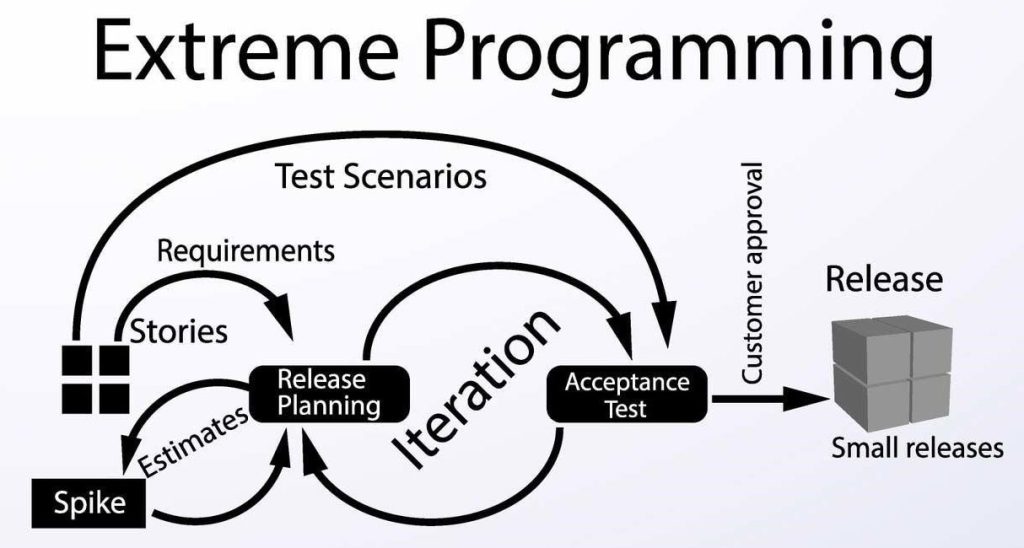
Extreme Programming (or XP), another Agile methodology, focuses on generating higher-quality software by employing best practises in software development. XP, like most Agile techniques, provides for frequent releases in short application development methodologies sprints that encourage change when it is required.
In general, XP adheres to a set of values rather than steps, which include simplicity (build only what is necessary), communication (teams must interact and work together on every piece of software), continuous feedback, and respect.
Extreme Programming necessitates that website developer first design and comprehend the customer’s user stories—their informal descriptions of specific features. Scheduling and breaking work into iterations are two other techniques. Design with simplicity in mind, code frequently, and test thoroughly to ensure error-free software. Listen to feedback to get a better understanding of the feature, and then test some more.
6. Lean
Lean is both a workflow technique and a mentality, combining industrial ideas and practises and applying them broadly to a range of industries, including software development. While Agile is a fantastic methodology for the actual application development methodologies of best practises in development, it does not offer instructions for scaling these practises across the organisation or applying them outside of application development methodologies -related activity.
This is why many firms that use Agile at the team level begin to add Lean principles, methods, and technologies to aid with scaled innovation. The basic principles of Lean—optimize the whole, eliminate waste, build quality in, create knowledge, defer commitment, deliver quickly, and respect people—can help to guide decision-making across the organisation in a way that can help to uncover potential issues and maintain a healthy organisational culture.
Combining the best of Lean thinking and Agile software application development methodologies processes can result in a healthy, long-term culture of innovation that benefits not only the application development methodologies company, but the entire system.


